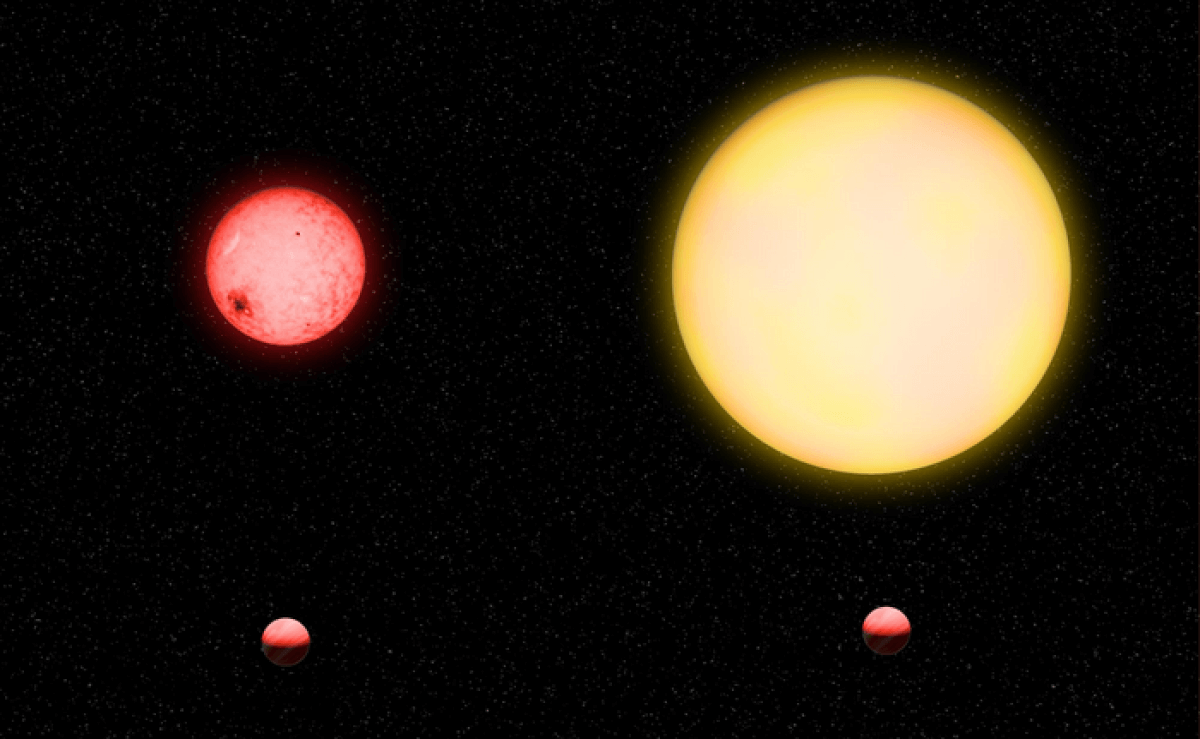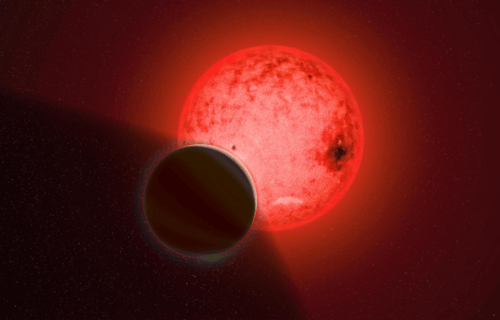WASHINGTON — This is no science fiction plot — astronomers say there’s an actual “forbidden planet” orbiting a distant star out in space. This Jupiter-sized gas giant is orbiting a small red dwarf star called TOI-5205. While these stars are some of the most common in our galaxy, scientists have thought they were far too small to give birth to a planet this big — until now.
Astronomers from the Carnegie Institution for Science explain that M dwarfs make up about three out of every four stars in the Milky Way galaxy. They are smaller and cooler than our Sun, giving off about half as much heat and being much redder in appearance. Although they give off much less light, they have extremely long lifespans.
The mystery of TOI-5205 begins when researchers looked at the planets orbiting this dwarf star. Usually, M dwarfs are home to more planets than other stars, but these worlds are typically rocky bodies — not gas giants. NASA’s Transiting Exoplanet Survey Satellite (TESS) was the first to spot this forbidden planet, TOI-5205b, as it passed in front of the star.
While that is a normal way of spotting planets out in space, the Carnegie teams says TOI-5205b blocked out roughly seven percent of the star’s light. Compared to other planets and stars, that’s an enormous ratio.

“The host star, TOI-5205, is just about four times the size of Jupiter, yet it has somehow managed to form a Jupiter-sized planet, which is quite surprising!” explains study author Shubham Kanodia, who specializes in studying these stars, in a media release.
Astronomers have found gas giants orbiting older M dwarf star before, but this is the first time scientists have found one circling a low-mass M dwarf like TOI-5205. For comparison, the researchers say a gas giant like Jupiter orbiting our Sun is like a pea going around a grapefruit. In the case of TOI-5205b, who has a much smaller home star, it’s more like a pea going around a lemon.
The amount of light TOI-5205b blocks out when it crosses the M dwarf (7%) is one of the largest “exoplanet transits” scientists on Earth have recorded.
Astronomers explain that planets form in a rotating disk of gas and dust which surrounds young stars. When it comes to gas giants, scientists believe it takes about 10 Earth masses of this rocky material to build up and form a massive core. From there, the planet rapidly sweeps up gas from the disk in order to form its gassy exterior. Carnegie scientists say the timing of all this is crucial.
“TOI-5205b’s existence stretches what we know about the disks in which these planets are born,” Kanodia explains. “In the beginning, if there isn’t enough rocky material in the disk to form the initial core, then one cannot form a gas giant planet. And at the end, if the disk evaporates away before the massive core is formed, then one cannot form a gas giant planet. And yet TOI-5205b formed despite these guardrails. Based on our nominal current understanding of planet formation, TOI-5205b should not exist; it is a ‘forbidden’ planet.”
A new mystery for the James Webb Telescope
Study authors say this discovery paves the way for NASA’s newest space probe to step in and study the forbidden world.
Due to TOI-5205b’s large transit around the star, it’s “extremely conducive” for future observations by the JWST. Astronomers hope the space telescope will be able to provide even more insights into the planet’s atmosphere.
Learning more about the makeup of this planet may explain how it was able to form into such a large mass despite orbiting such a tiny star.
The study is published in The Astronomical Journal.


The universe is electric. The sooner the establishment realizes this, the sooner we discover whatever it is we are looking for. Instead of having to make up a different story for every star/planet/galaxy/situation.. stars form like “pearls on a string” of electric filaments.